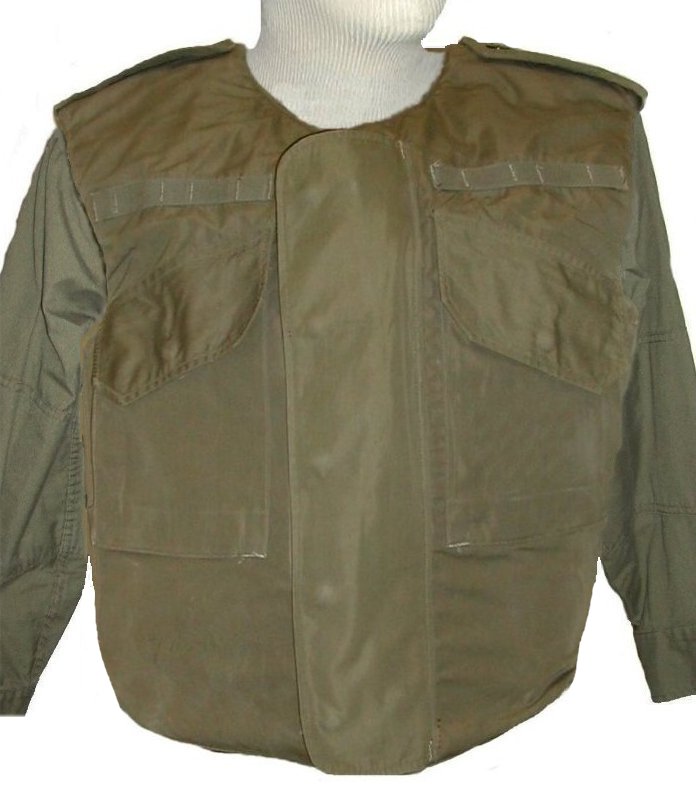

Personal body armor is often referred to in the press to as a "bullet proof vest". This is a misconception as (with a few exceptions) body armor is not bulletproof. While standard vests may stop some handgun rounds, body armor is primarily intended to protect against shell fragments and splinters. There is a vast difference between domestic police body armor and body armor intended for combat. For details of Canadian Military Police soft body armor, see MP Occupational Patrol Dress.
Body Armor was in very limited issue in the Canadian Army in the 1970s and 80s and first saw wide use in the first Gulf War and later in Somalia and Bosnia.
On the first deployment to Afghanistan Canadian soldiers wore various patterns of body armor scraped together from Canadian sources as well as American patterns. At least one example of British Combat Body Armour Lightweight Mark 1 with a Canadian military "D" Disposal mark has been noted, however that example may date from the first Gulf War or was an example acquired for trials. Current Canadian Body Armor is now more or less standardised and is produced in Cadpat TW and AR versions.

The M1952 vest was developed by the American military during the Korean War. The vest consists of 12 layers of ballistic nylon in a nylon cover and weighs approximately 8 - 9 lbs depending on size. The vest is fitted with epaulettes and has a concealed frontal zipper covered by a flap. There are lace-up adjustments on each side of the vest. The vest has two patch cargo pockets, inside the left pocket is a pen holder. A thin strip of webbing is stitched above each pocket, these were intended as grenade carriers. The M69 Ballistic vest was developed in the 1960s and was an upgraded version of the M1952 vest. It was similar to the M1952 vest but had a 3/4 roll collar consisting of 3 - 6 layers of ballistic nylon. Epaulettes were omitted on the M69 vest. Early pattern vests have the flap secured by 5 snap fasteners, on later pattern jackets, the flap is secured with velcro. The M1952 and M69 vests provided a good measure of protection against lower velocity fragments, shrapnel and splinters. Canada purchased a quantity of M1952 and M69 vests in the early 1970s, these were a limited standard issue for Peacekeeping operations until about 1990. They are now obsolete and Canadian stocks were sold as surplus.





A Canadian sourced example of British Combat Body Armour Lightweight Mark 1 with a Canadian military "D" Disposal mark. It is likely this example dates from the United Nations Iraq-Kuwait Observer Mission (UNIKOM) circa 1991-93. A quantity of British Desert DPM camouflage uniforms were acquired and worn by Canadians taking part in that mission. No images or records of this pattern being worn by Canadians in Afghanistan have as yet come to light.



In the early 1990s several patterns of body armor were trialled by the Canadian Forces. These included at least two domestic patterns and the American PASGT (Personal Armor System for Ground Troops). A pattern known as "Body Armor Fragmentation Protective Vest Style" was adopted about 1994 and put into production. Several slightly different versions of this vest were worn operationally until the early 2000s.






